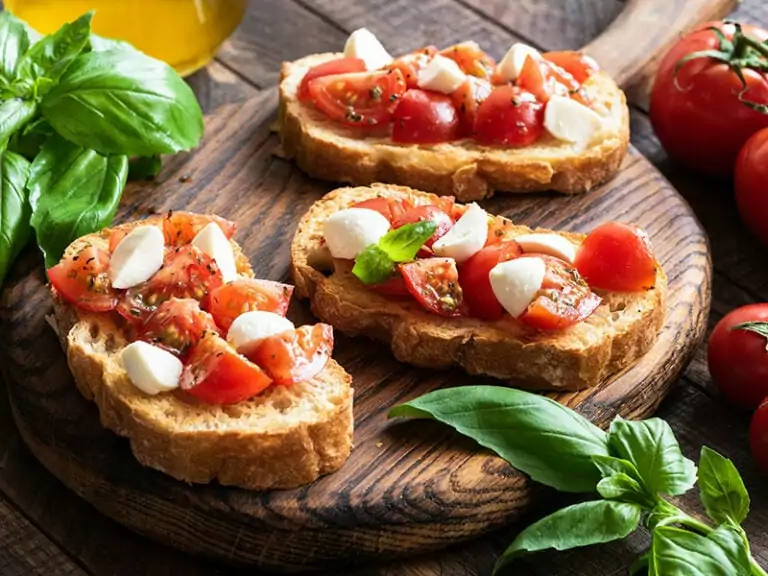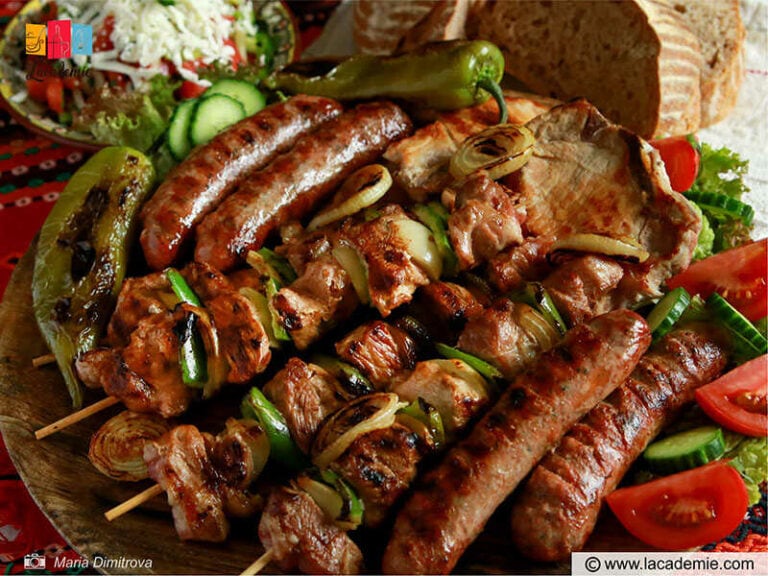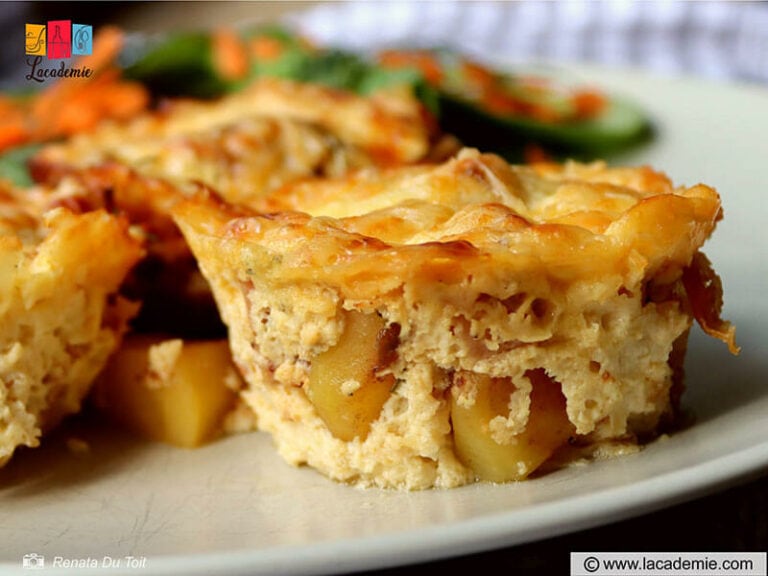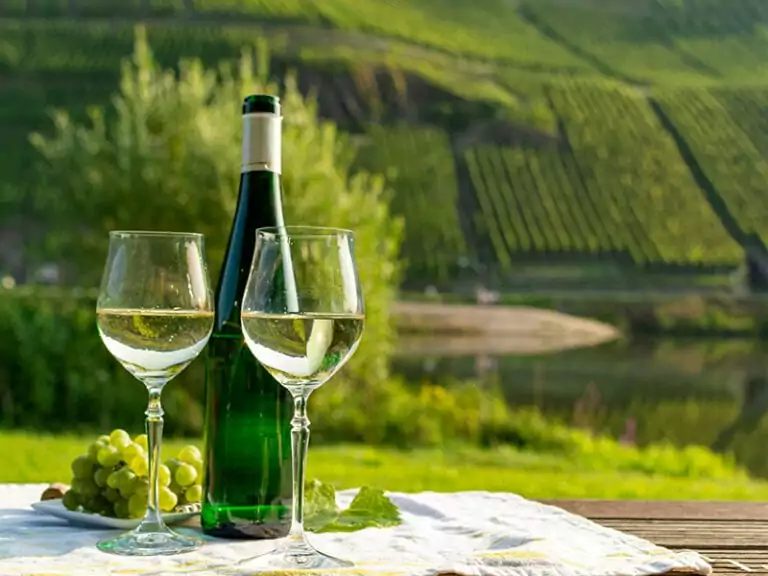European vegetables aren’t merely ingredients: they also carry the flavors and colors of this great cuisine. It’s as though each one whispers, “Know me, cook me, taste me!” In this post, I’ll get you up close and personal with the most famous vegetables from Europe.
Exploring this will not only elevate your meals but will also aid your journey toward better health. Stick around since each line you read will bring you a step closer to becoming a true connoisseur of European vegetables.
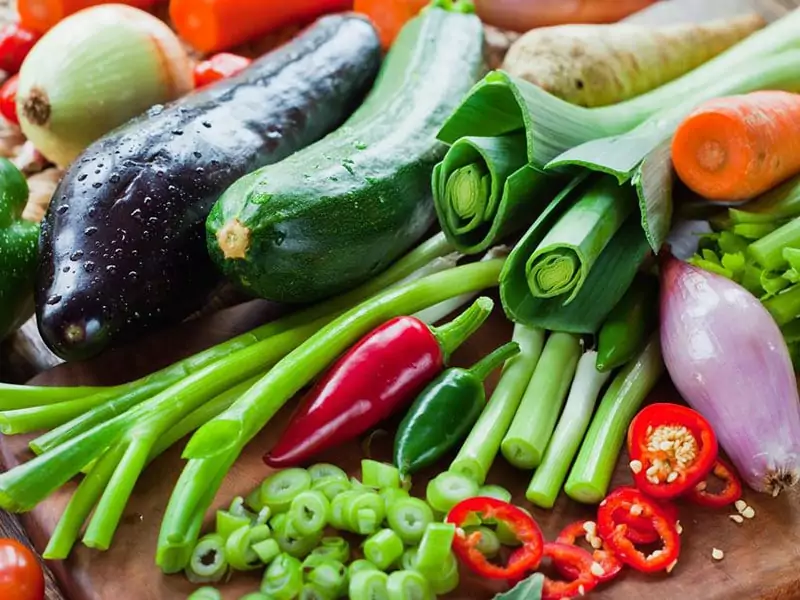
Classification of European Vegetables By Region
Eastern European Vegetables
This cuisine heavily features hearty and earthy vegetables that can survive colder climates. Many traditional delights in Eastern Europe include them.
In Borscht, a traditional soup originating in Ukraine and Russia, beets are the star ingredient (though some versions don’t use beet). Polish savory Pierogi, a type of dumpling, often contains fillings of cabbage or sauerkraut.
Northern European Vegetables
Root vegetables like potatoes, beets, and turnips are common ingredients in Northern Europe delicacies due to the colder climate.
A few leafy greens, such as kale and cabbage, are also popular. For example, Swedish Potatisgratäng is a creamy potato dish, and Fårikål is a Norwegian stew made with mutton and cabbage.
Southern European Vegetables
In many Southern European specialties, vegetables like tomatoes, eggplants, bell peppers, and zucchinis are staples. Ciambotta from Italy and Ratatouille from southern France celebrate a medley of these vegetables.
Greek moussaka layers eggplant, potatoes, and a spiced meat sauce under a creamy bechamel. Spanish gazpacho, a chilled tomato-based soup, revolves around cucumbers, bell peppers, and garlic.
Western European Vegetables
A mix of root vegetables, leafy greens, and Mediterranean vegetables is common in Western European-styled dishes. French cuisine includes Pot-au-Feu (a hearty stew with root vegetables and meat).
Belgian endive, a type of leafy green, is often used in traditional Belgian dishes. An example is Chicons au Gratin, which wraps the vegetable in ham and covers it with a creamy bechamel sauce and cheese.
Central European Vegetables
Encompassing countries such as Germany, Austria, and Hungary, authentic Central European delights often use root vegetables and cabbages. German sauerkraut (fermented cabbage) is a well-known example.
In Austria, a popular dish is Tafelspitz, boiled beef in broth served with a mix of root vegetables, minced apples, and horseradish sauces. Hungary’s national dish, Goulash, is a hearty stew made with beef, carrots, potatoes, and a generous amount of paprika.
Italy
1. Friggitello
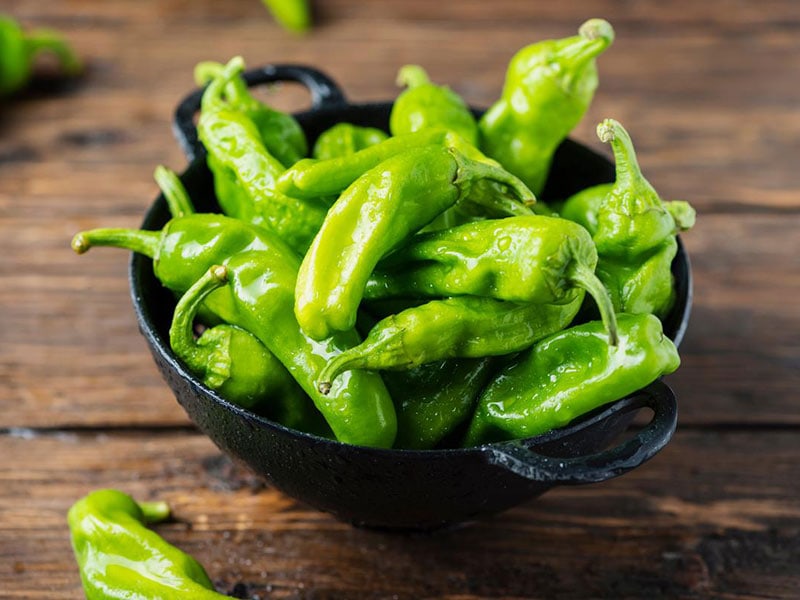
Friggitello (or friggitelli in the plural form) is a kind of chili pepper with a fascinating story. Since it originated from the beautiful region of Tuscany, “Tuscan pepper” is another name for it. Although Americans may call it pepperoncini, friggitello is distinct from the spicier Italian chili pepper.
So what does friggitello taste like? This pepper offers sweet, crisp flesh with mild heat. While it can reach a vibrant red hue when ripe, people tend to pick it when the pepper is still yellow or green.
Its versatility in cooking is admirable, no matter what recipes you try: pickles, sautees, stuffed dishes, and even roasted delicacies.
2. San Marzano Tomato
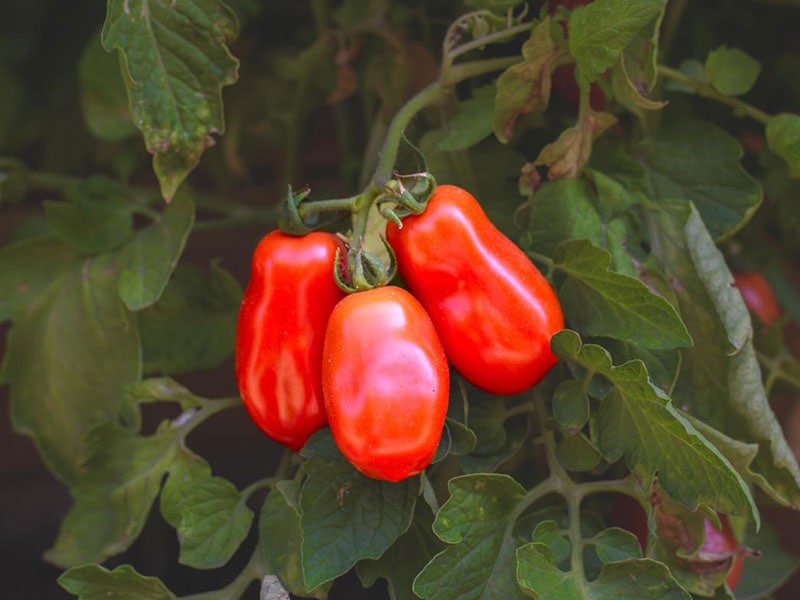
The San Marzano tomato comes from Italy’s Campania region, whose capital is Naples. This plum tomato variety grows in the fertile Agro Sarnese Nocerino valley near Mount Vesuvius. It carries the prestigious Protected Designation of Origin (PDO) certification issued by the EU.
With thick flesh, few seeds, and low moisture, this tomato variety differs greatly from many other breeds. But that’s not all: Its uniquely sweet flavor with low acidity level is a true revelation.
The tomato is a favorite ingredient for canning or creating pastas, curry sauces, gazpacho soup, and pizzas. If you’ve tasted a “Vera Pizza Napoletana” (“true Neapolitan pizza”), you’ve experienced the unique touch of the San Marzano tomato.
3. Pomodoro di Pachino
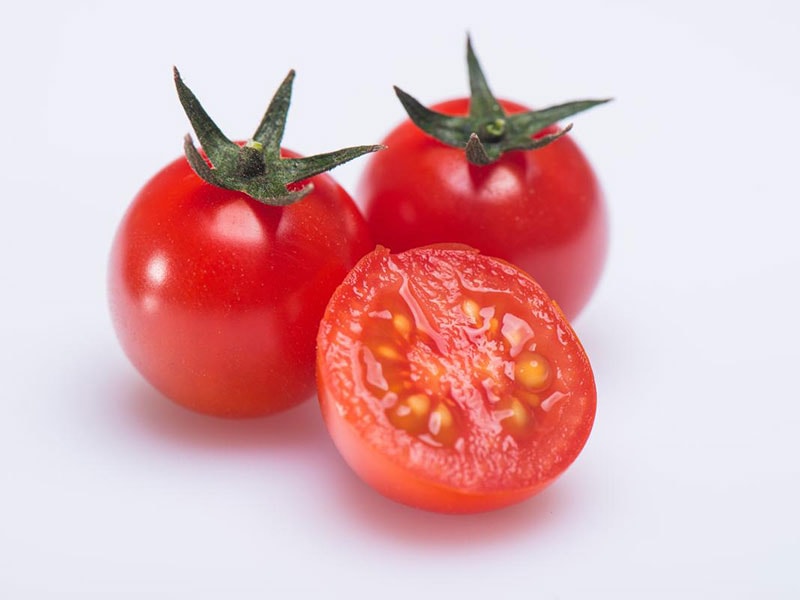
Pomodoro di Pachino refers to four distinct tomato varieties cultivated along the coast of Sicily. Each variety is recognized by the EU’s Protected Geographical Indication (PGI) status.
Meet the small, round, dark green “Tondo-Liscio” with its dense consistency and the “a Grappolo” that clusters round and smooth fruits in shades of red or green. There is also the winter specialty “Costoluto” with ribbed and dark green skin and the sweet “Ciliegino” (cherry tomatoes).
They all have a crunchy, sweet pulp and tough skin that ensures they stay fresh longer. They are also perfect for sun-drying, adding fresh to your plate, or as a flavorful garnish.
4. Radicchio
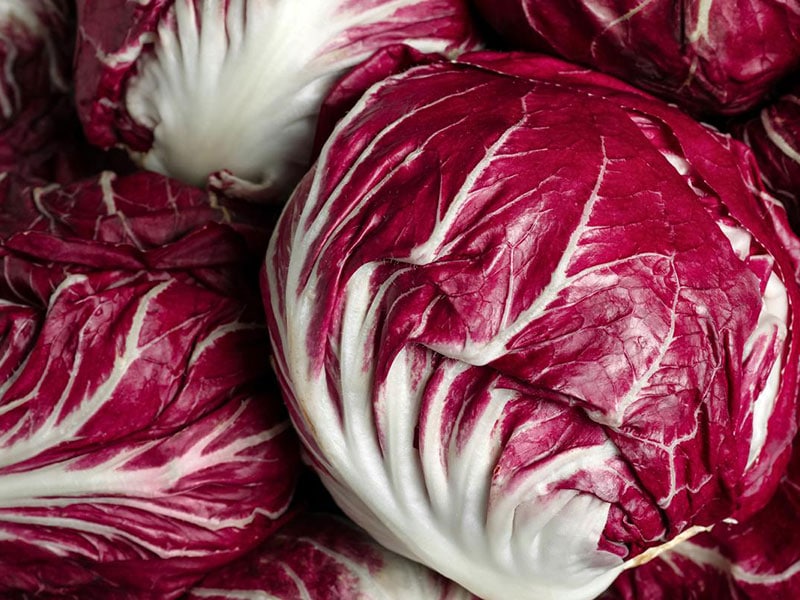
Also known as Italian chicory, radicchio is a cabbage-like leafy vegetable with a stunning look. Its red-violet leaves slashed with white veins, are truly eye-catching. More than a visual spectacle, the vegetable offers a spicy and bitter taste, which is rather pronounced if eaten raw or tossed into salads.
However, try cooking it (whether grilling, roasting, braising, or sautéing), and its taste will mellow down significantly. This beautiful vegetable is a trove of nutrients, too, since it is rich in fiber, antioxidants, vitamin K, and many minerals [1].
The Veneto region is renowned for its popular radicchio varieties. Each carries a local area’s name, such as Radicchio di Castelfranco, Radicchio Rosso di Treviso, or Radicchio di Chioggia.
5. Sedano Nero di Trevi
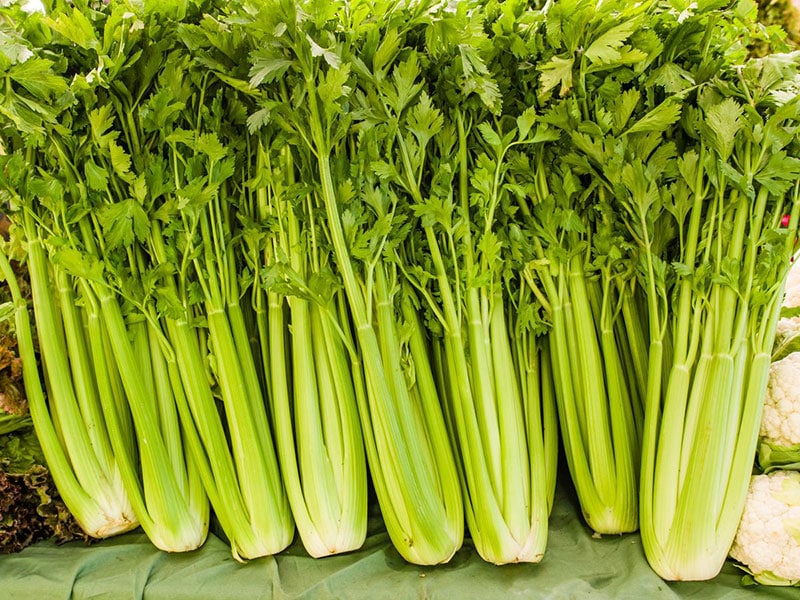
Tracing its origins back to the 17th century in the ancient town of Trevi, this black celery is a wonder to behold. Sedano Nero di Trevi sports dark-green ribs, long stems stretching over 12 inches, and white hearts (the inner ribs from the stalk). Its fragrant aroma is as appealing as its appearance.
From sautéing to stuffing or enhancing a pesto sauce, the versatility of Trevi black celery is impressive. It is also part of the Trevi heritage, as only a few families can grow this celery and preserve its seeds.
6. Tenerumi
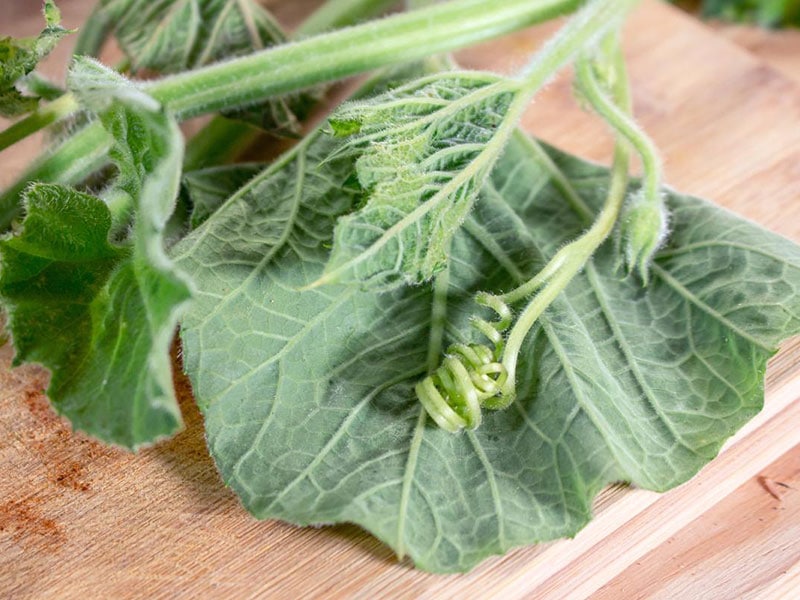
This Sicilian delicacy is simply buds, leaves, and tender shoots of Sicilian summer squash, known as cucuzza or zucchina in the local tongue. You can buy it in summer markets on the island or the nearby region of Calabria.
The charm of Tenerumi resides in its rustic yet sophisticated nature. Filled with a sweet, nutty, and vegetable taste, it can add a distinct touch to various dishes. You can saute it with garlic or add it to pasta, soups, stews, and sauces. Pasta con Tenerumi is a delightful recipe to prepare.
7. Zucca Mantovana
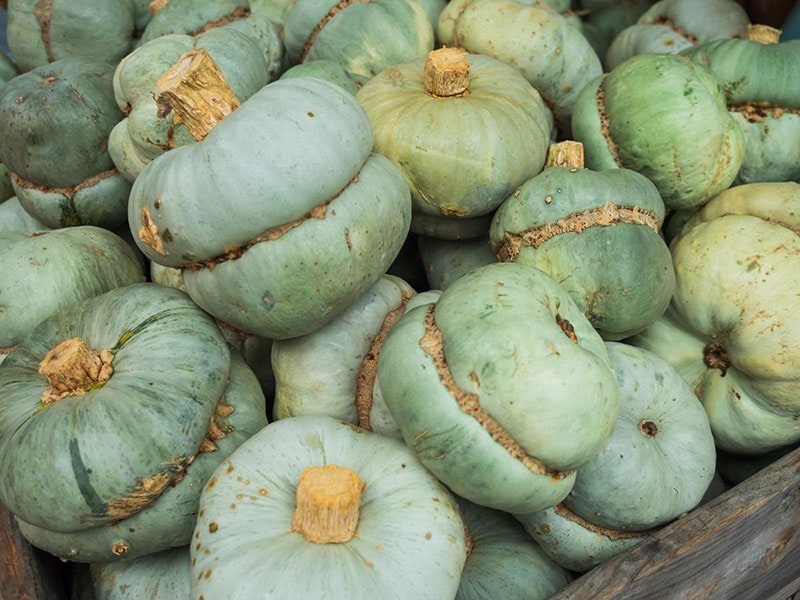
Zucca Mantovana is a pumpkin variety hailing from Mantova in Lombardy. It can capture one’s imagination with its wrinkled, grayish-green skin and distinct flat top and bottom.
Its appeal isn’t just about looks, though. The sweet, thick flesh offers a delicate and irresistible pumpkin taste. Regardless of size, this versatile pumpkin can effortlessly adapt to various cooking techniques, from frying and baking to steaming, roasting, and grilling.
8. Cavolo Nero
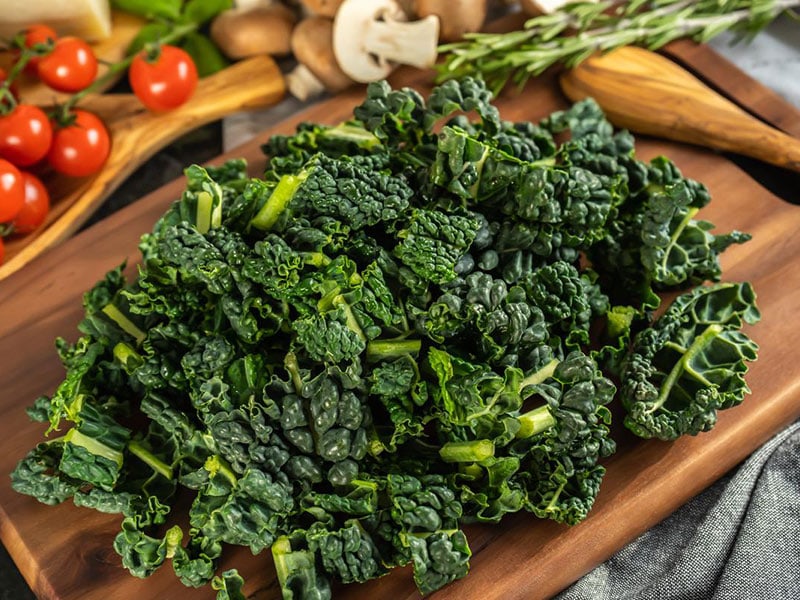
This global green delight has many other names, such as Tuscan kale, Italian kale, or black kale. Next time you visit a supermarket, check if this Italian green is available.
The dark blue-green leaves hide a unique flavor profile beneath: a sour, bitter taste giving way to a sweet finish. Cavolo Nero is a perfect replacement for curly kale or collard greens. Like kale, it contains folic acid, antioxidants, iron, and vitamins.
Netherlands
9. Brabantse Wal Asperges
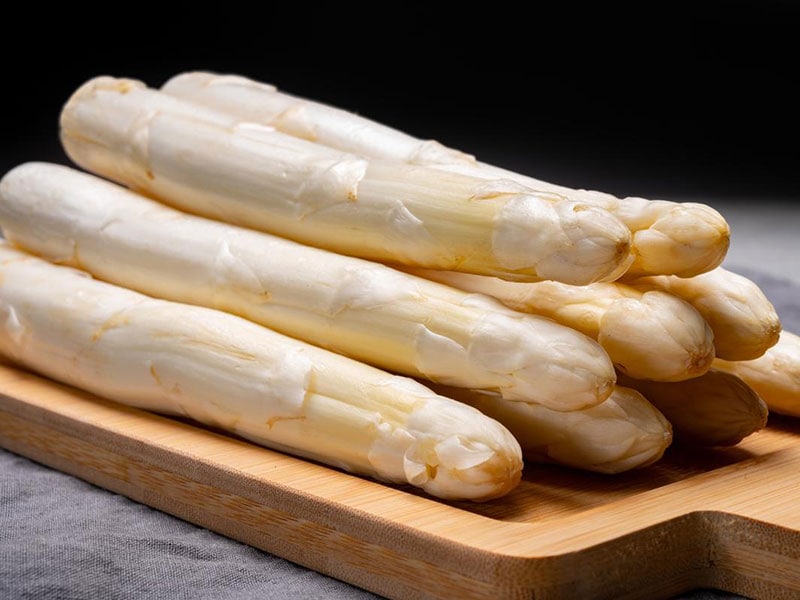
Brabantse Wal Asperges is a distinguished asparagus variety from North Brabant. These stalks acquire their unique flavor profile from the pure groundwater of Kalmthout heathlands and the ocean breezes of Zeeland. The result is a slightly salty, sweet taste without bitterness.
The best time to experience this exquisite vegetable is from April to June. It harmonizes perfectly with meat, fish, boiled eggs, root vegetables, and cheesy sauce. In recognition of its distinctiveness, the EU granted this asparagus the status of a protected regional product in 2016 [2].
10. Bintje Potatoes
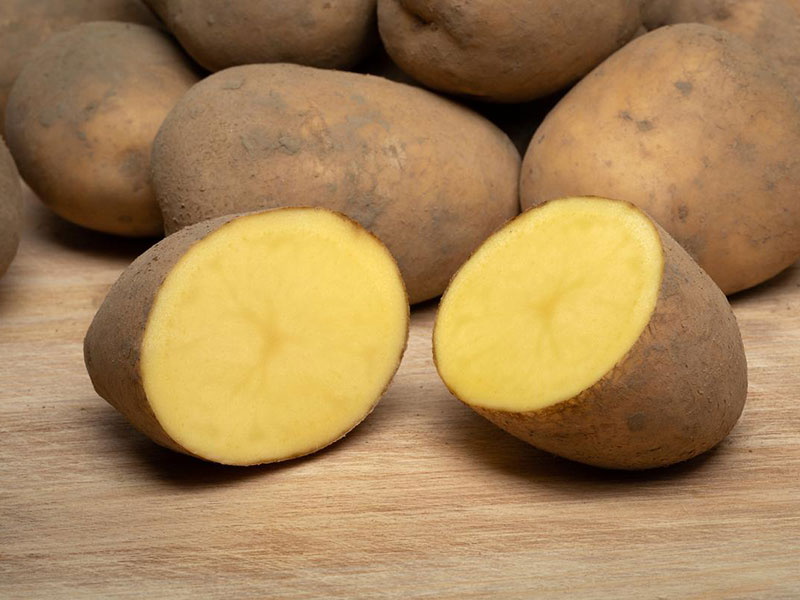
The delicious Dutch potato variety owes its existence to a Frisian schoolmaster named K.L. de Vries. He created this high-yielding potato with a light, nutty flavor and a texture that leans on the dry side. Despite susceptibility to common scab, it is widely grown in the Netherlands, France, and Belgium.
These medium-sized, oval-shaped spuds wear yellow skin that covers equally sunny flesh. Their versatility in the kitchen is truly impressive; they play well in boiling, baking, frying, mashing, roasting, and even salad-making.
Croatia
11. Varaždinsko Zelje
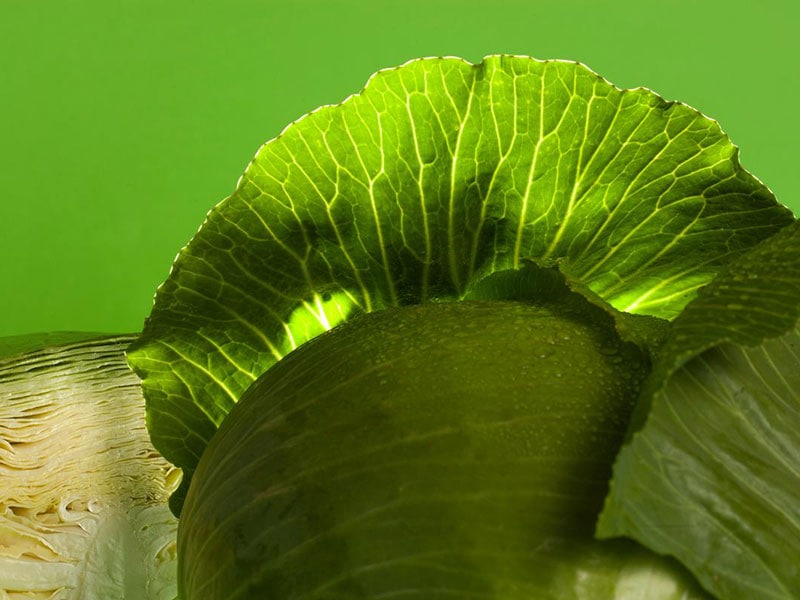
This heritage cabbage derives its name from Varaždin County, Croatia. It has been thriving since the 18th century, unbothered by cold weather. Locals often cultivate it as a spring cabbage. The EU protects its raw, unprocessed form, a testament to its quality.
With tough leaves and a bitter, sharp flavor, Varaždinsko Zelje asks for more cooking time, which accidentally makes it perfect for hearty stews and soups. Nutrient-wise, the vegetable is a cornucopia of fiber, folate, B vitamins, antioxidants, and potassium.
12. Lički Krumpir
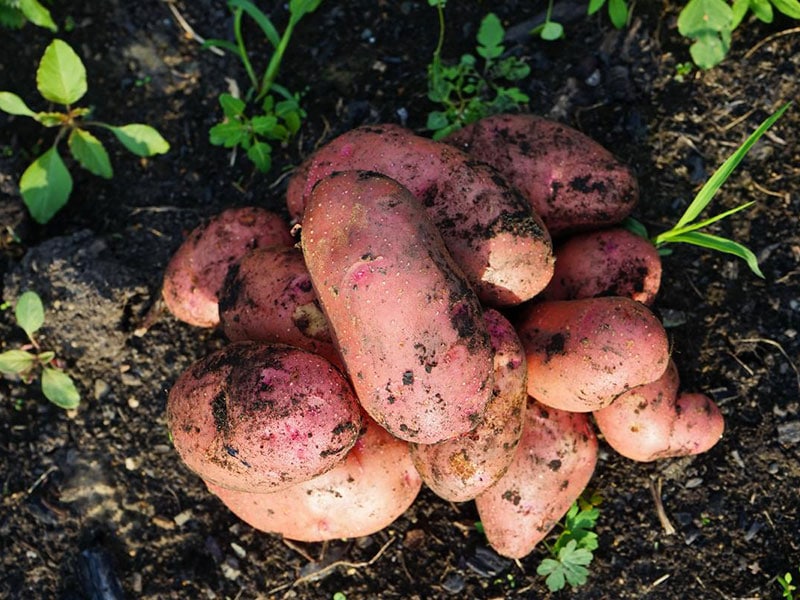
The traditional Croatian baked potato dish Ličke Police can’t be complete without Lički Krumpir, a superb potato variety from southwestern Croatia’s Lika region. It boasts yellow-brown skin and a cream-colored interior with a higher-than-average starch content.
This lends a fantastic crisp-on-the-outside and soft-on-the-inside texture when cooked. Besides baking, the potato is similarly ideal for roasting or turning into golden French fries.
Spain
13. Pimiento de Gernika (Gernika Pepper)
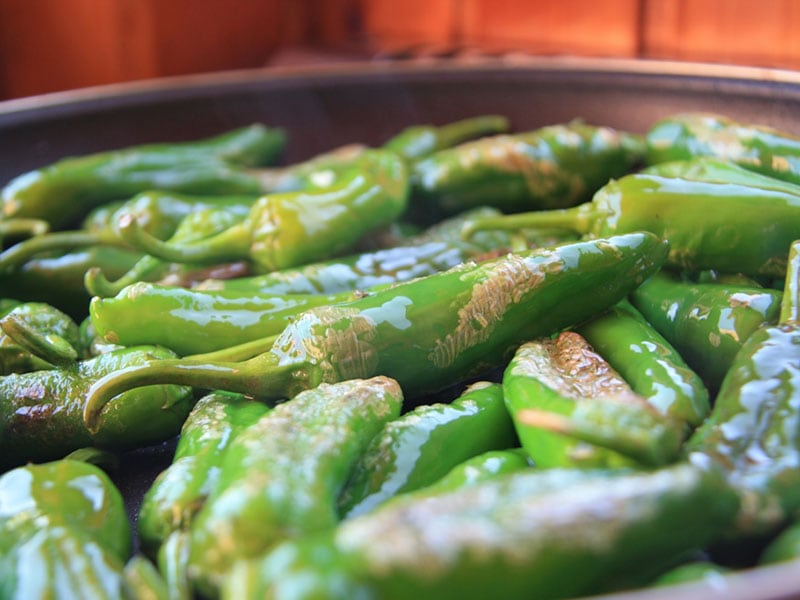
Here’s a little secret from my culinary journey: Pimiento de Gernika, a green pepper native to the northern Basque region in Spain. It has glossy, waxy skin and a mild, grassy flavor profile with just a touch of heat.
Like Basque people, I enjoy the pepper when it isn’t fully ripe. Whether fried, grilled, or raw, it infuses meals with a Basque character. You may come across it under the name of Guernica chile peppers.
14. Pataca de Galicia
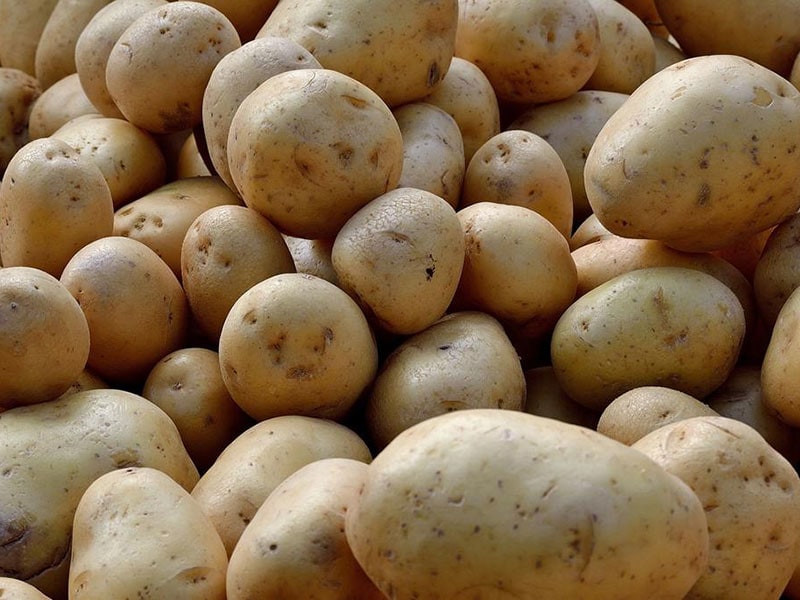
Pataca de Galicia is a yummy potato variety with roots in the lush region of Galicia. It has a creamy white flesh that turns incredibly smooth once cooked. In the mid-18th century, it soared to popularity during a cereal crisis and remains a favorite today.
Interestingly, its beautiful flowers were once used as ornaments to decorate Galician homes. Pataca de Galicia holds the PGI status and can turn into any potato dish you have in mind.
15. Papas Antiguas de Canarias
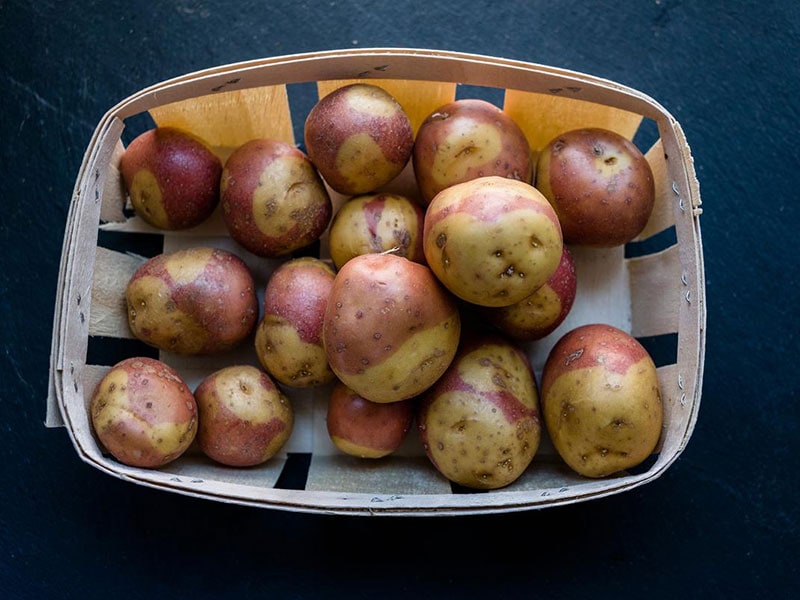
The potatoes of the Canary Islands are collectively known as Papas Antiguas de Canarias. They encompass around 29 varieties, which are mostly small and have a round shape. Their skin colors vary from a mystical blackish purple to earthy brown.
But their most wonderful feature is their unrivaled quality, courtesy of the rich volcanic soils and unique climate. The conditions impart a mellow, chestnut-like aroma and a buttery consistency to these potatoes.
Among them, Black Lily, White Lily, Bonita Blanca, Papas Del Riñón, and many others stand out. Their limited availability due to challenging cultivation conditions only enhances their allure.
16. Cebolla Fuentes de Ebro
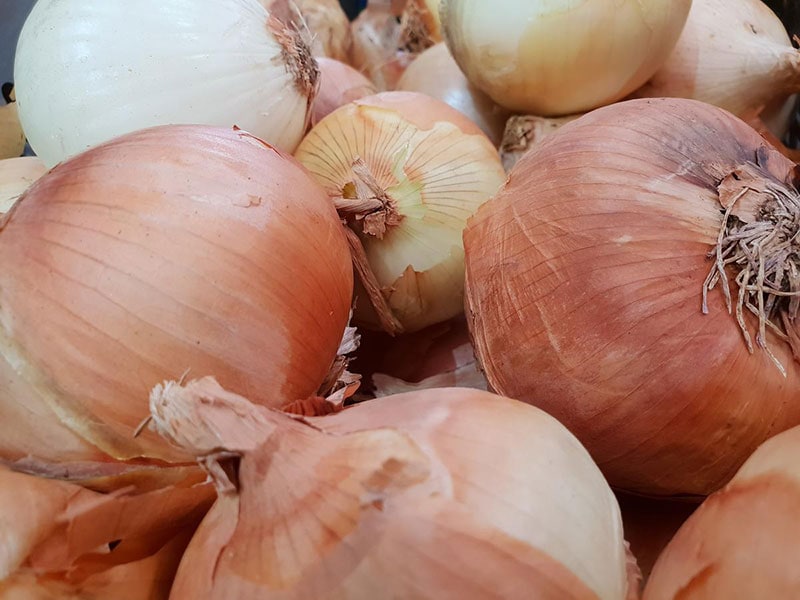
If you love Walla Walla or Vidalia onions, Cebolla Fuentes de Ebro will be your next favorite food ingredient. This type of onion comes from the municipality of Fuentes de Ebro in the province of Zaragoza. High in water content, it offers a very mild flavor and no lingering aftertaste.
Its succulent texture and tender layers that display hues of white and yellow captivate both the eyes and the palate. Unsurprisingly, it is the sole PDO-granted onion variety in Spain.
17. Espárrago de Navarra
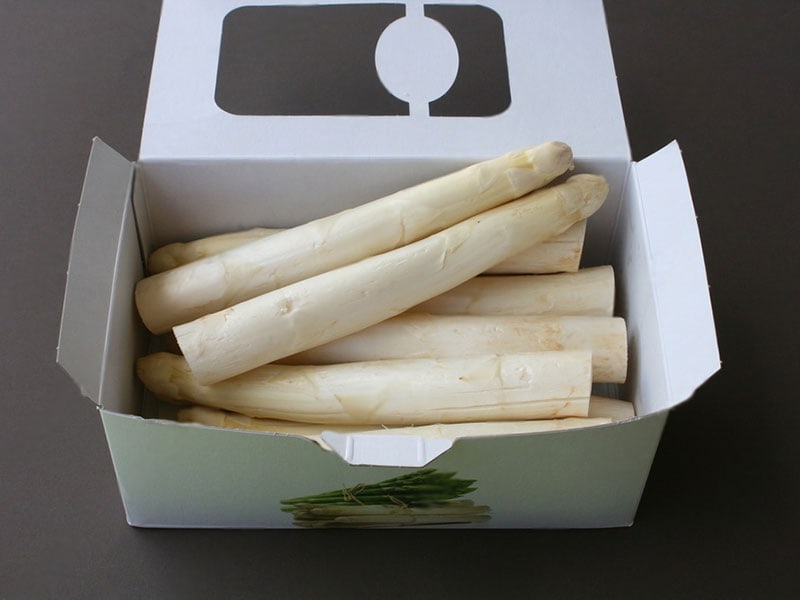
This is a Navarre-originated white asparagus, a PGI vegetable. And the sweet, mellow-tasting delicacy soon won me over. Its surprisingly smooth texture without any tough fibers was another delight.
Once, I paired it with roast chicken, another time with a hearty seafood stew. Both were fantastic. I hear that Espárrago de Navarra tastes well with root vegetables and sauces, too.
If you want to taste it, the prime season is between March and June. Finally, always store it in the fridge for the best quality.
18. Calçot de Valls
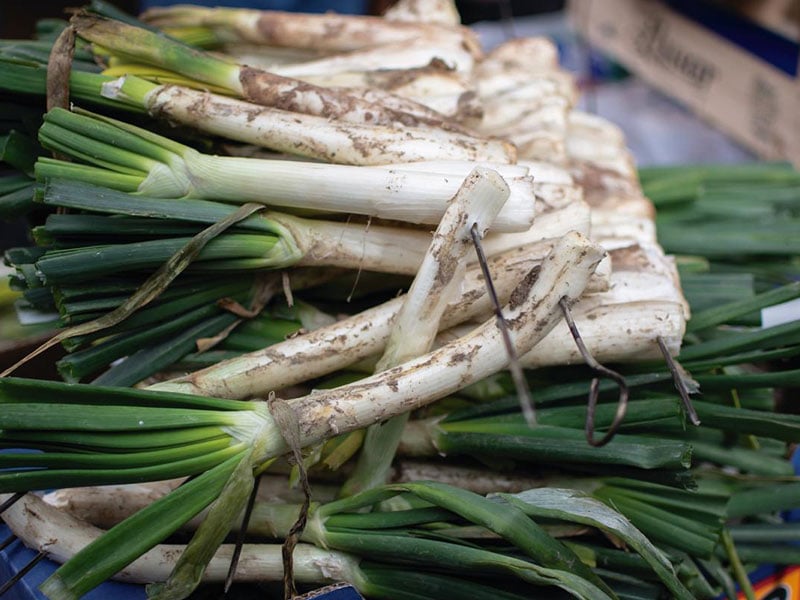
Calçot de Valls are shoots harvested from replanted white onions. They are named after the city of the same name in Catalonia and must be nurtured for at least a year before they’re ripe for cooking. This PGI onion isn’t your typical onion, though.
With a bright white color and a milder flavor, they’re more akin to scallions. The traditional way to indulge them is to grill them and dip them into savory salvitxada sauce (a concoction made with almonds). The occasion that features this dish as the main course is called a Calçotada in Catalan.
19. Padrón Peppers / Herbón Peppers
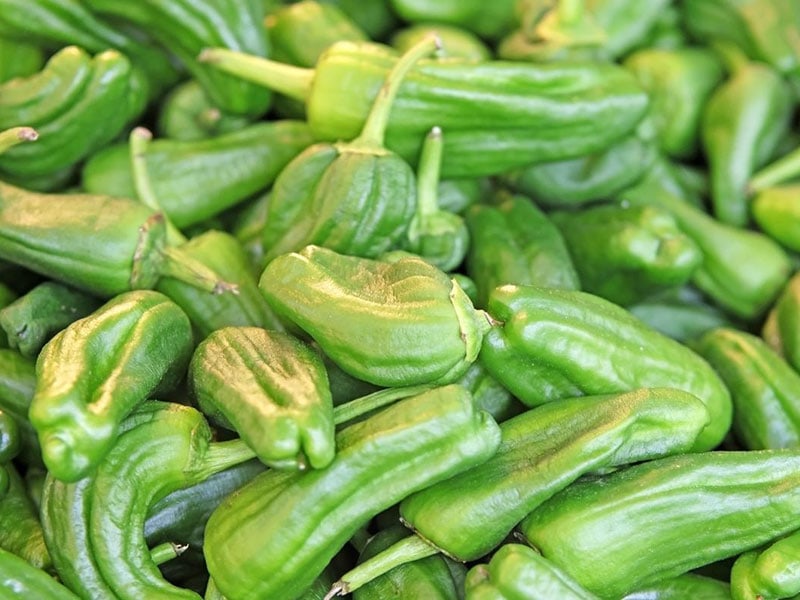
Padrón peppers, or as locals call them, Herbón peppers, hail from the municipality of Padrón in northwestern Spain. These small, elongated peppers aren’t as fiery as jalapenos. Its spiciness rates are just 500 to 2,000 Scoville heat units.
They’re usually picked when green. I’ve tried them fried in olive oil, paired with cheese, or simply sprinkled with sea salt. They’re always a hit, especially when served as a tapa.
20. Guindilla Pepper
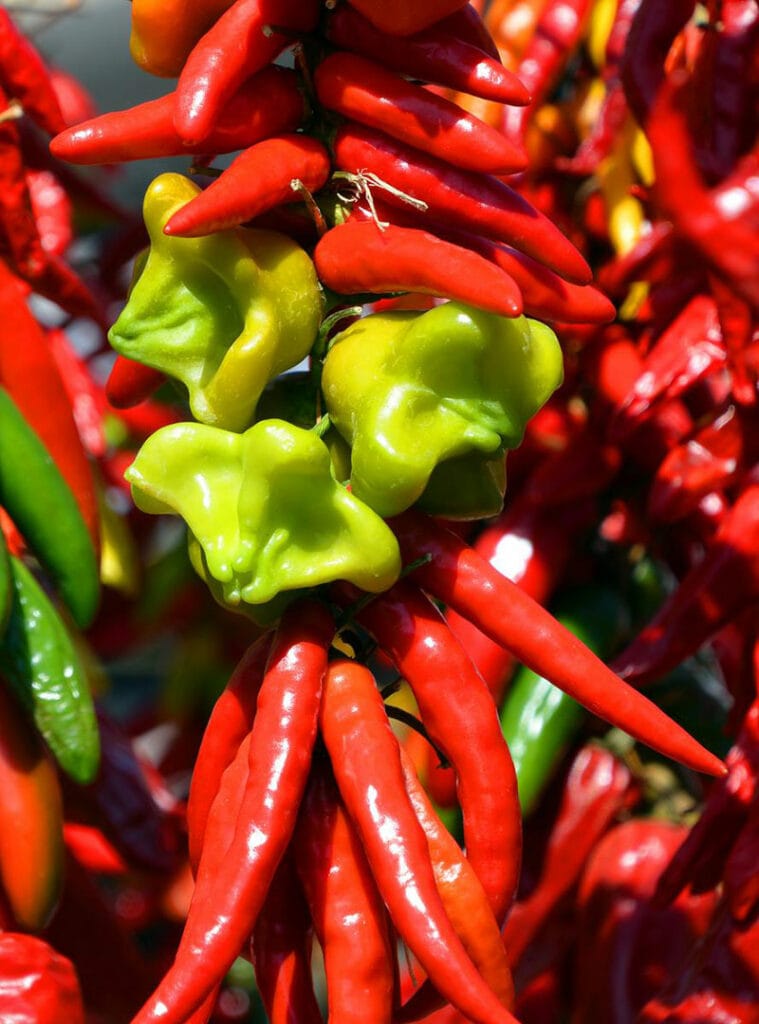
A delicacy from the Basque region, Guindilla peppers are also known as piparras. They offer a distinctive long shape and a yellowish-green hue. Their flavor is a delicate balance of sweet, spicy, and tangy notes, yet much less fiery than a jalapeño.
The texture is perfectly soft, with just the right amount of crunch. Whether you fancy them raw or pickled in vinegar, they’ll bring a new twist to your dishes.
France
21. Espelette Pepper
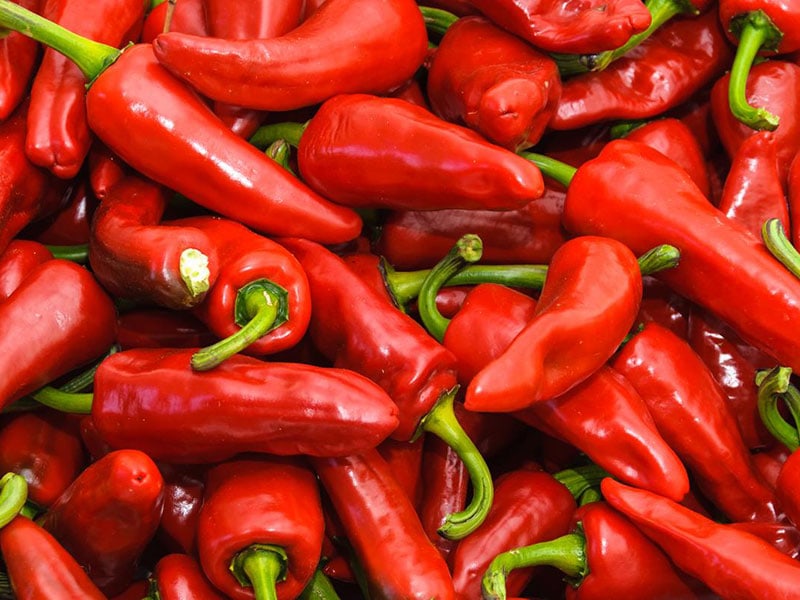
Have you heard about Espelette pepper, or Piment d’Espelette in French? This unique pepper variety hails from its namesake commune in France. It is a beloved condiment in Basque cuisine and the star ingredient in the iconic Piperade stew.
Its EU-granted (Protected Designation of Origin) recognition is a powerful confirmation of its significance. The pepper has a sweet, fruity flavor. It adds the perfect kick to grilled meats, burgers, and cooked vegetables.
Whether fresh, dried, pickled, or pureed, it’s all set to spice up your culinary journey.
22. Mâche Nantaise
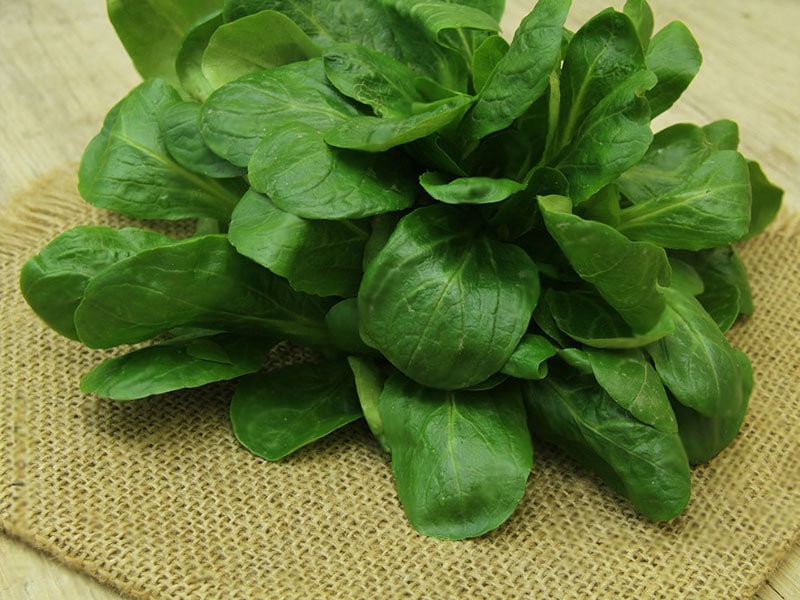
Nestled within the fields of Vendée, Loire-Atlantique, and Maine-et-Loire in France is a gourmet green named Mâche Nantaise. It is a fantastic French variety of type of mâche, the fancy name for lamb’s lettuce or common cornsalad.
This small, fast-to-grow leafy vegetable sports long, vibrant green leaves that grow from the root. Since the 19th century, its unique flavor mixed between tanginess and nuttiness has brought so much joy to French cuisine, especially salad dishes.
But this green is relatively mild, so you should mix them with the right ingredients. On a side note, it has the PGI status granted by the EU.
23. Oignon de Roscoff
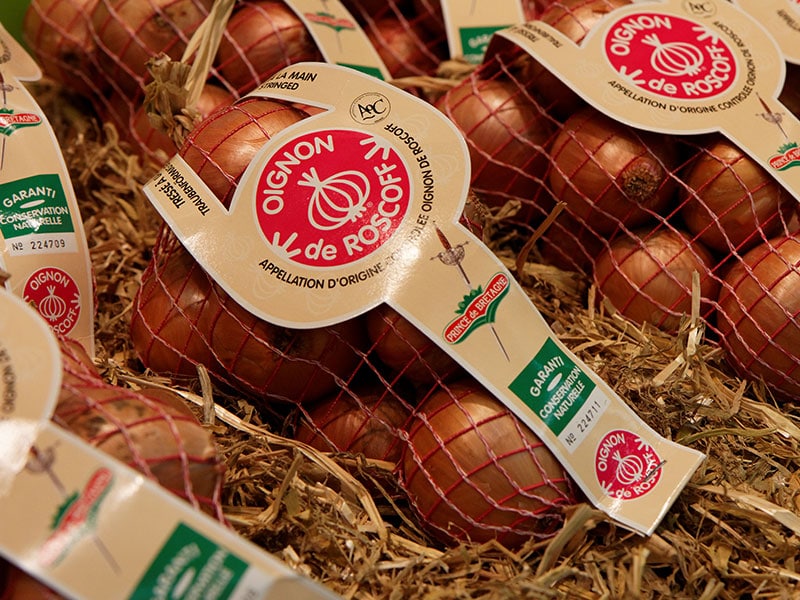
Roscoff, a commune in the Brittany region of northwest France, forever leaves an indelible mark in the culinary world thanks to a delicious onion bearing its name: Oignon de Roscoff. Recognized by its pinkish hue, this onion has been adored since the 17th century for its sweet and subtle taste.
You can even catch a whiff of its mild, fruity aroma, a distinct characteristic of this PDO vegetable. Mainly grown in the Finistère department, it is a hardy species. The onions can last over 10 months if stored correctly!
Roscoff even houses a dedicated museum, the Maison des Johnnies et de l’Oignon de Roscoff, where an annual summer festival pays tribute to this revered bulb.
24. Oignon Doux des Cévennes
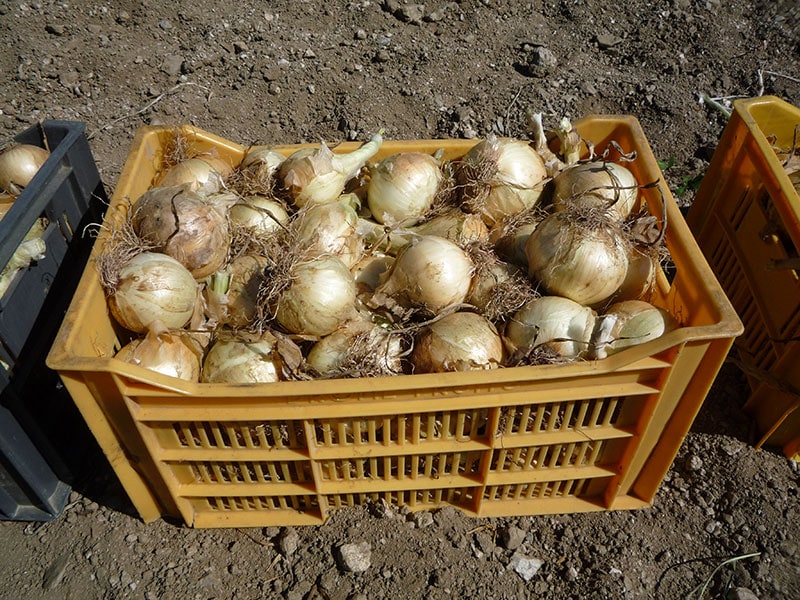
This French sweet onion variety is unique in many ways. Growing snugly in the Gard region’s terraces, the local acid sand soil and dry climate give it a distinct flavor. The environment also minimizes the risks of rot, molds, and parasites. It earned the PDO label in 2008.
With a skin that varies from white to light yellow, its juicy flesh carries a mild and mellow taste, utterly devoid of any bitterness. You might even find yourself snacking on it raw or slicing it into your favorite salad. It can even appear in desserts like sweet onion tarts.
25. Cayenne Pepper
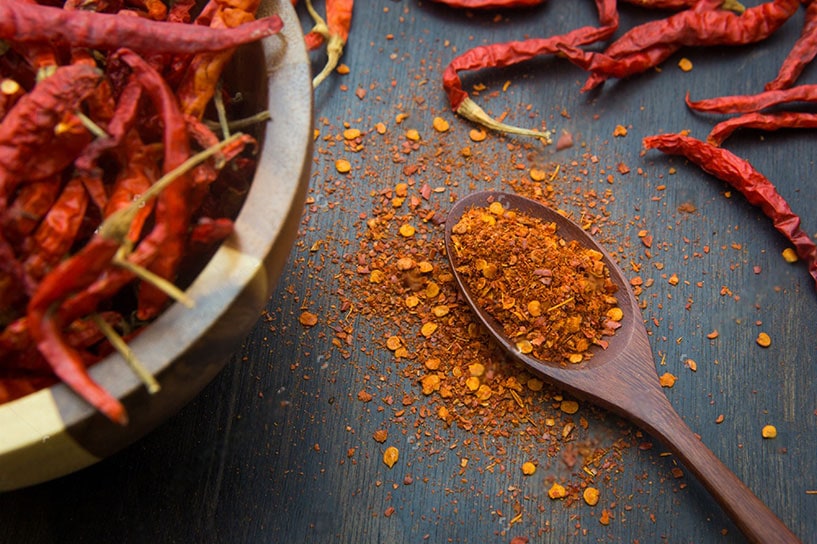
Many food lovers like to spice things up with cayenne peppers. They are named after the capital Cayenne, French Guiana (an overseas department of France in South America).
Nowadays, these chili pepper family members are grown in abundance in mainland France and many other countries. They range from 30,000 to 50,000 on the Scoville scale, indicating their fiery potential.
They are often used in dried or ground form to improve the deliciousness of various dishes. In addition, capsaicin, the compound responsible for its fiery flavor, is linked to health benefits. It includes pain relief, blood level management, and mood boost [3].
Greece
26. Patata Kato Nevrokopi
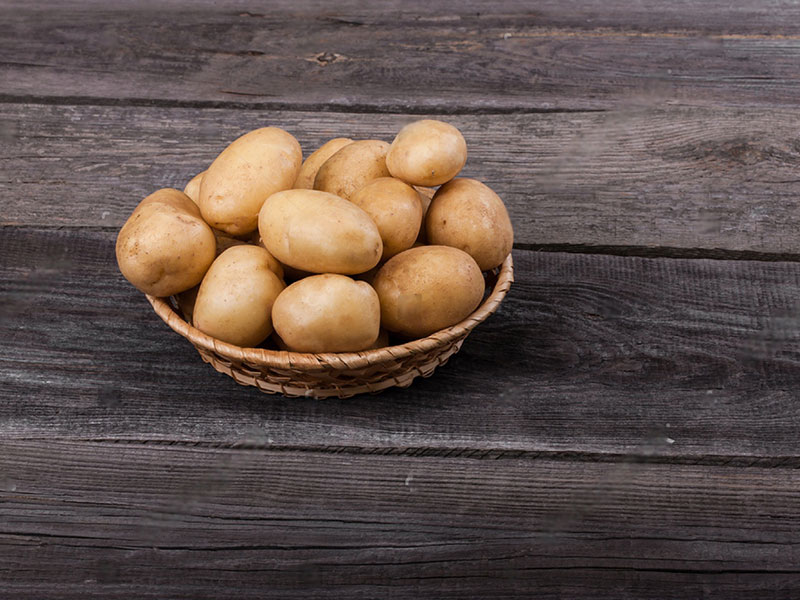
A staple of Greek cuisine, the Patata Kato Nevrokopi potato proudly bears the name of its originating plateau in East Macedonia and Thrace. It has been nurturing many Greek municipal areas since the 1920s.
Those potatoes are grown during summer and harvested in September or October. With their high starch and carb content, they adapt well to all cooking methods – be it mashing, boiling, baking, or transforming into crispy fries.
27. Patata Naxou
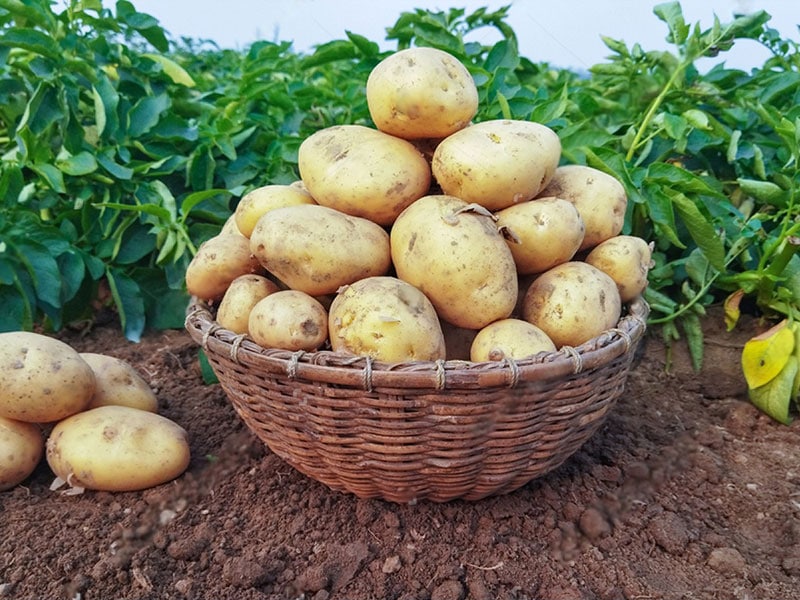
Patata Naxou potatoes are named after the island of Naxos, which has produced superb potatoes since the 1950s. Fertile soil, abundant water, and a favorable climate give them exceptional quality.
Donned in yellow skin, these high-starch potatoes have an earthy, slightly sweet flavor. They are ideal for baking, pureeing, grilling, or boiling. Spring and autumn are the times when they’re at their freshest and most abundant.
28. Santorini Tomato
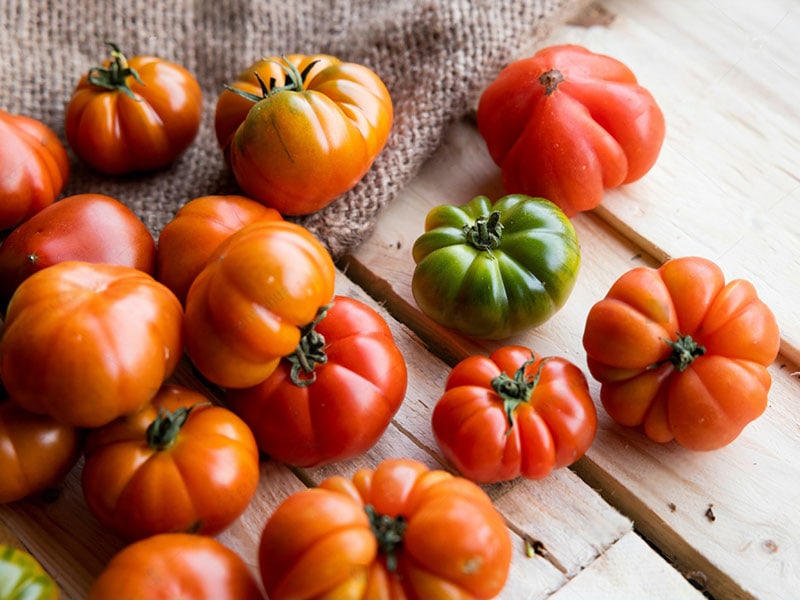
I have always strongly liked the Santorini tomato, which hails from the island of the same name in the southern Aegean Sea. You may know the island as Thera or Thira. Its volcanic soil nourishes the cherry-sized tomatoes, blessing them with a deep red color and firm flesh.
These tomatoes carry a balance of strong sweetness and acidity. From tossing them into salads to preserving them through canning or pickling, they never disappoint me. Their abundance of seeds may be a discomfort to some people, but not me.
29. Tsakoniki Melitzana Leonidiou
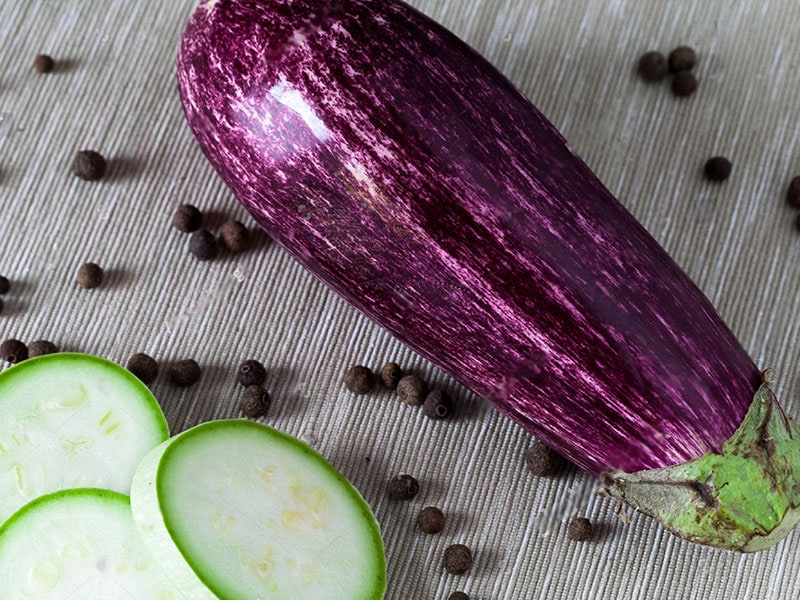
Arcadia is home to a gorgeous type of eggplant called Tsakoniki Melitzana Leonidiou. It boasts shiny purple skin adorned with white stripes and a sweet, grassy taste without any trace of bitterness. Therefore, it needs no soaking before cooking.
Since 1996, Tsakoniki Melitzana Leonidiou has carried the prestigious PDO certification. Its versatility shines in various summer dishes, like Glyko Melitzanaki me Grenadini (eggplant fruit preserve) and Melitzanosalata (eggplant dip).
30. Florina Peppers
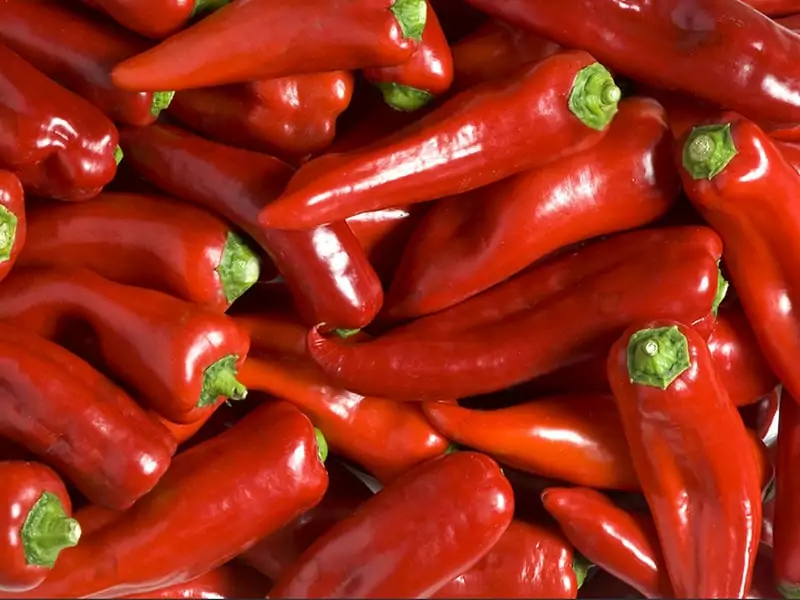
Curved like a cow’s horn, Florina peppers are vibrant red beauties cultivated primarily around the town of Florina in Western Macedonia. Brought from Brazil in the 17th century, they’ve diversified Greek cuisine with their rich, sweet flavor and thick, firm flesh.
These peppers are not just tasty but also healthful. They are brimming with fiber, manganese, and vitamins C, K, and E.
In addition, they are recognized with a PDO certification. For cooking recipes, Florina peppers enhance the flavor of various Greek salads, sauces, pasta, or Greek appetizers.
Germany
31. Schrobenhausener Spargel
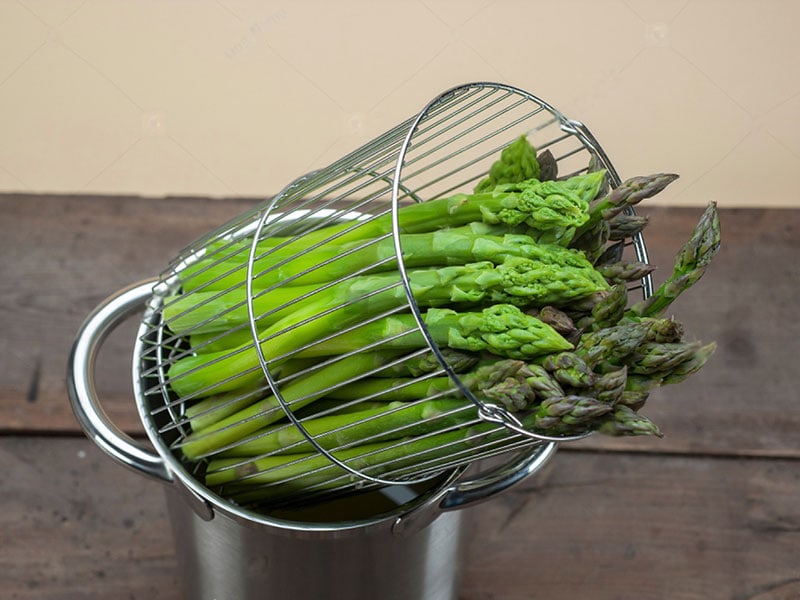
This German asparagus variety is a specialty of the town of Schrobenhausen, nestled in Bavaria, Germany. The region’s unique sandy soils and special microclimate nurture it, showing up in white and green hues.
In case you don’t know, “spargel” means “asparagus” in German. It has a tender texture and nutty flavor. The asparagus is excellent at pairing with creamy hollandaise sauce, ham, or boiled potatoes.
Schrobenhausener Spargel is celebrated annually in Spargelfest (asparagus festival), which usually coincides with St John’s Day on June 24. Asparagus enthusiasts can pay a visit to the European Asparagus Museum in Schrobenhausen.
32. Beelitzer Spargel
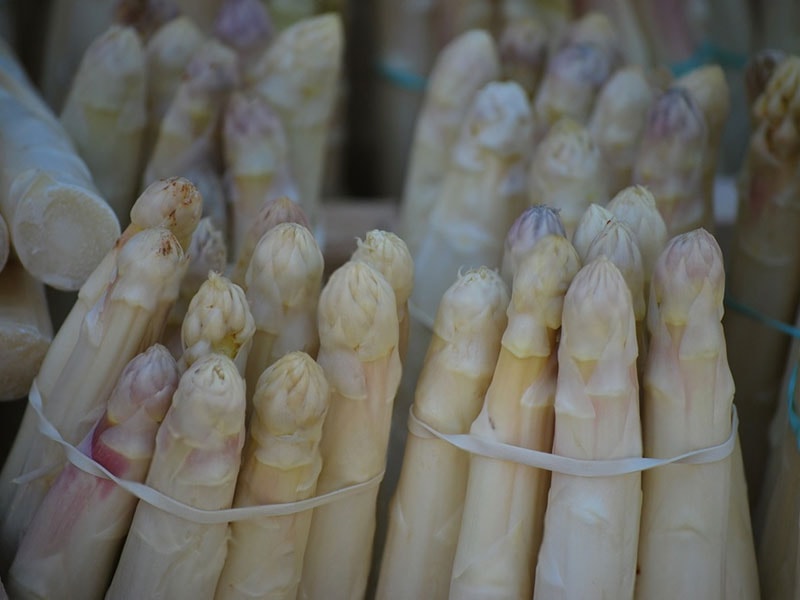
Hailing from the historic town of Beelitz in Brandenburg, Beelitzer Spargel is a thick asparagus celebrated for its exquisite taste. Available in shades of white and green, this vegetable has been a household name in Berlin and Brandenburg since its first cultivation in 1861.
But its journey has been a roller-coaster, with massive popularity followed by a decline after WWI. This veggie only regains its prestige after the unification of Germany. Beelitzer Spargel earned the PGI recognition in 2018 as a testament to its distinctive qualities.
33. Spreewälder Gurken (Spreewald Gherkins)
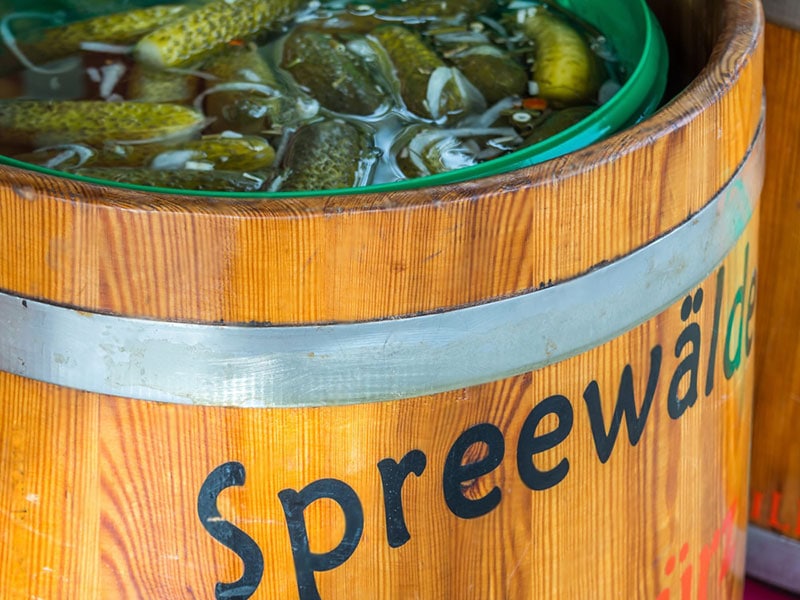
Spreewälder Gurken takes me back to the scenic Spreewald region and a point far in the past. These pickles were once an East German delicacy. Unlike many specialties from this part of the country, their fame skyrocketed after Germany’s reunification and remains popular to this date.
They were registered as a PGI product in 1999. Their flavor is as diverse as the ingredients: a blend of gherkins, onions, grape/ walnut leaves, and a mix of spices and aromatic herbs. One can never predict the flavor, sweet one moment and spicy the next.
England/UK
34. King Edward Potatoes
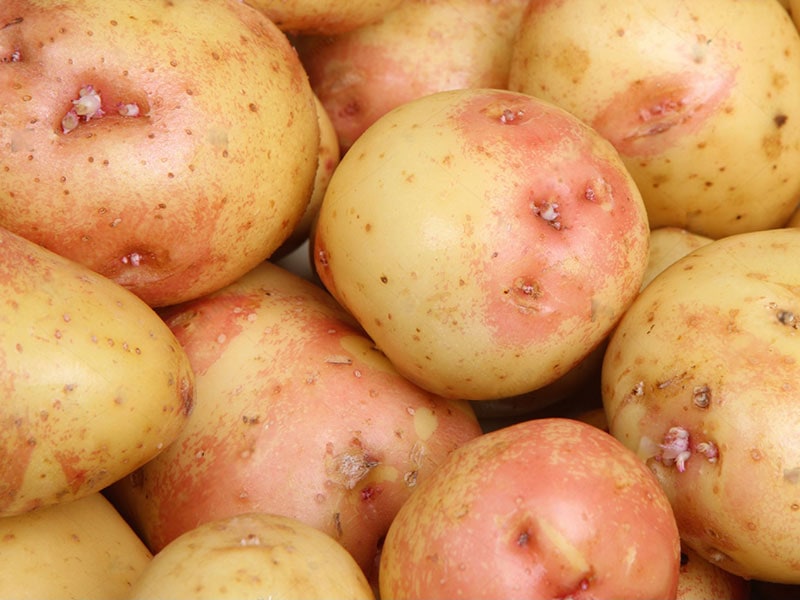
King Edward potatoes have been a part of my cooking adventures ever since I tasted this English starchy delight. As they were created in 1902, the same year King Edward VII was crowned, the royal name stuck around.
In fact, this variety has held onto its popularity for over a century and become one of the oldest potato cultivars still in cultivation. Its white skin, sprinkled with red blushes and shallow eyes, hides a creamy interior that turns fluffy upon cooking.
Whether baking, roasting, mashing, or making chips, these oval-shaped beauties never disappoint. I also use the potatoes for my dumplings and steamed dishes. Their strong resistance to common scabs adds to their charm.
35. Maris Piper Potatoes
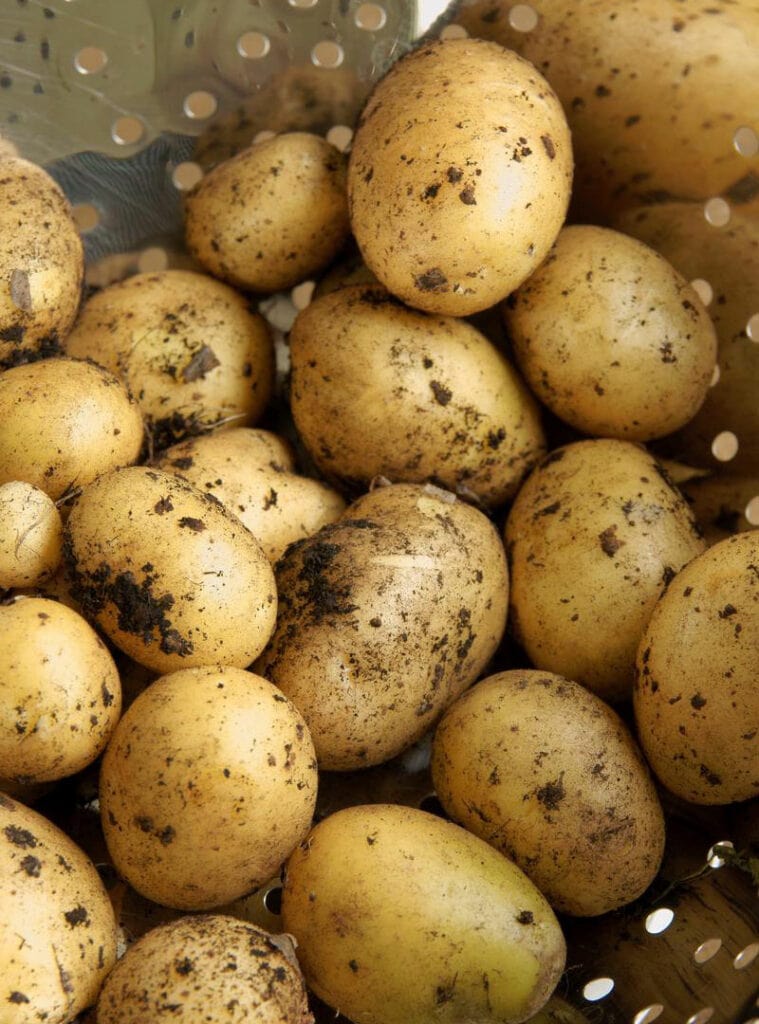
Don’t mistake Maris Piper potatoes for Maris Peer ones! The former was introduced in 1966 and has been a kitchen staple ever since. It is one of the most popular potato cultivars in England.
This floury potato variety boasts golden skin and creamy white flesh that tastes mildly sweet and earthy. Their fluffy starch is perfect for baking, mashing, roasting, and even whipping up fries.
Belgium
36. Belgian Endive
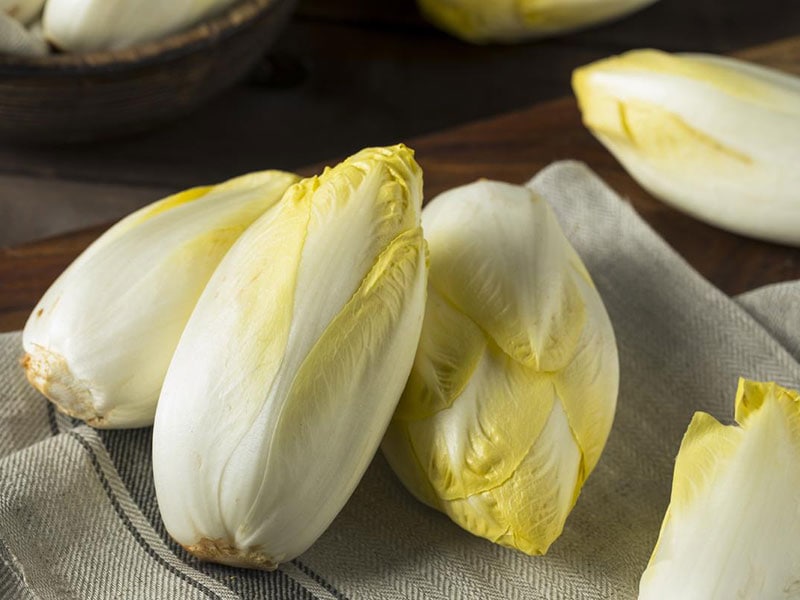
Belgian endive (pronounced n-dive) is a great leafy green that doesn’t grow naturally. It’s the product of human ingenuity, carefully cultivated in the dark to maintain its cream color and torpedo-like shape. Therefore, this vegetable is expensive and difficult to find.
The grueling cultivation process is worth the effort, though, as it brings out a satisfying crunch and a bittersweet flavor unlike any other. The flavor of Belgian endives might be unusual at first, but the vegetable will be awesome when tossed in salads or baked, grilled, and braised dishes.
Look for it from November to April. Its head has a torpedo-like shape that is hard to miss. You can also keep an eye out for its red cousin, Radicchio.
Quick fact: Belgians call it ‘witloof’
37. Brussels Grondwitloof
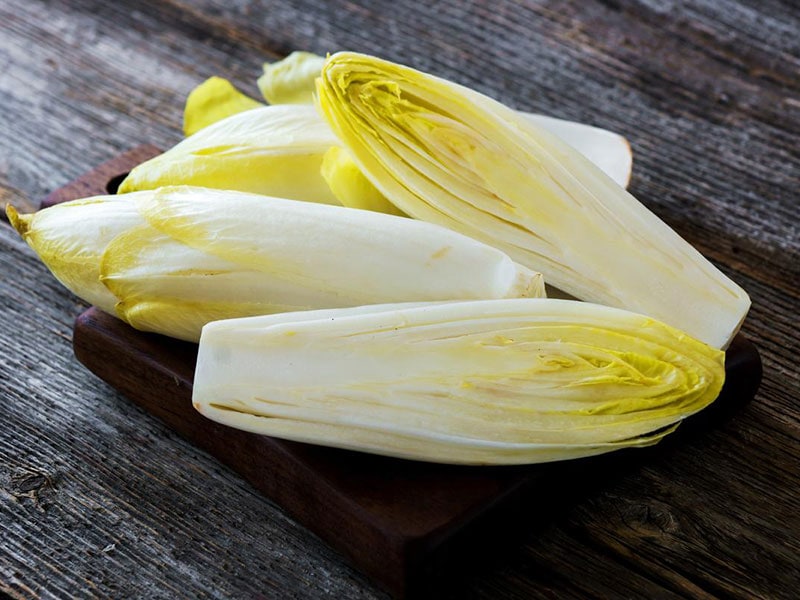
Brussels Grondwitloof is a type of Belgian endive created by growing Brussels chicory in the dark. Its flavor is a harmonious play of sweetness, sourness, and bitterness. The cultivation of this leafy vegetable requires two stages, starting with root cultivation in the warmth of summer and fall.
Then, in the cool air of winter to spring, those roots are encouraged to bloom in a chicory bed in the dark. The result is an exquisite head of glossy leaves, each matching the next in size, each crisply snapping under your teeth.
Others
38. Marchfeldspargel – Austria
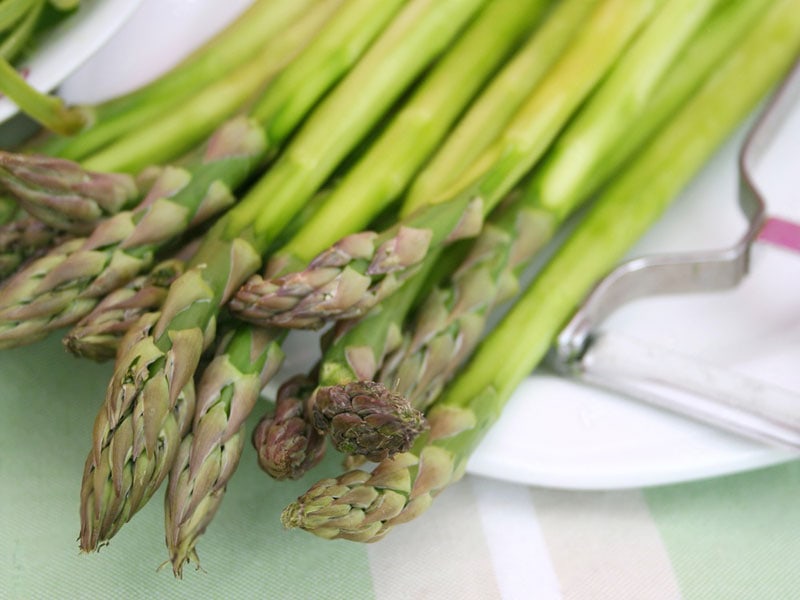
In the valley of Marchfeld, east of Vienna, grows a unique asparagus known as Marchfeldspargel. Its perfect quality, coming from plentiful sunshine and sandy soil of the valley, has marked it as an Austrian delicacy since the 19th century.
This asparagus displays colorful shades of green, white, or purple. It delivers a delightful crunch with every bite. But what leaves a lasting impression is its flavor: a mild sweetness truly belonging to Marchfeld.
39. Szentesi Paprika – Hungary
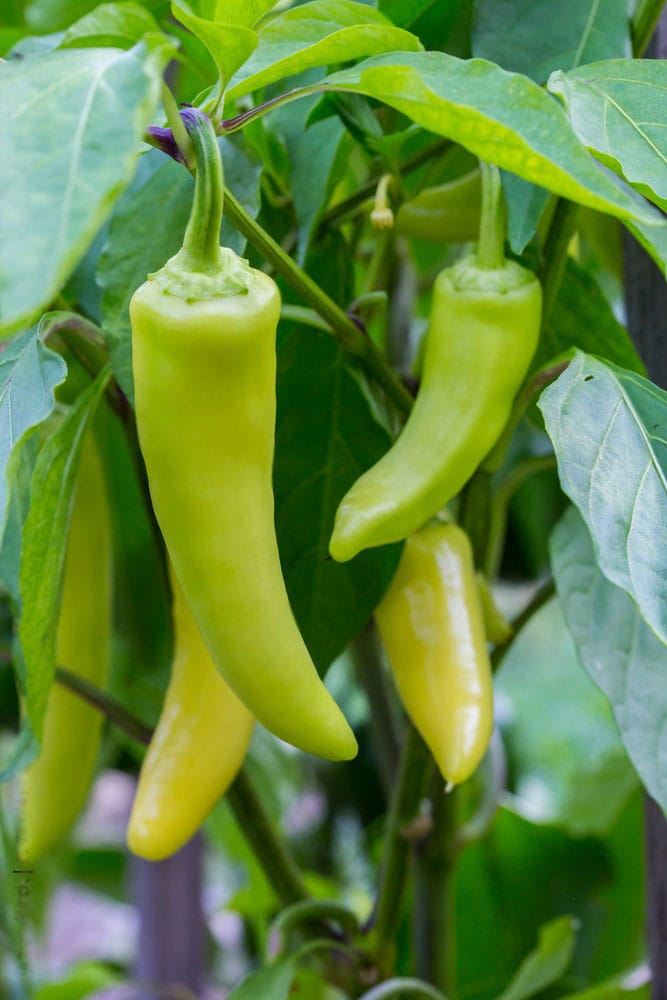
Named after Szentes, a town in south-eastern Hungary, this chili pepper belongs to the Capsicum annuum family and boasts a round shape and smooth skin, usually red.
What sets it apart, though, is its rich flavor, a careful balance of spicy and sweet tastes. Spiciness is often more pronounced, though. Szentesi Paprika carries the honor of being a PGI product.
40. Batata Doce de Aljezur – Portugal
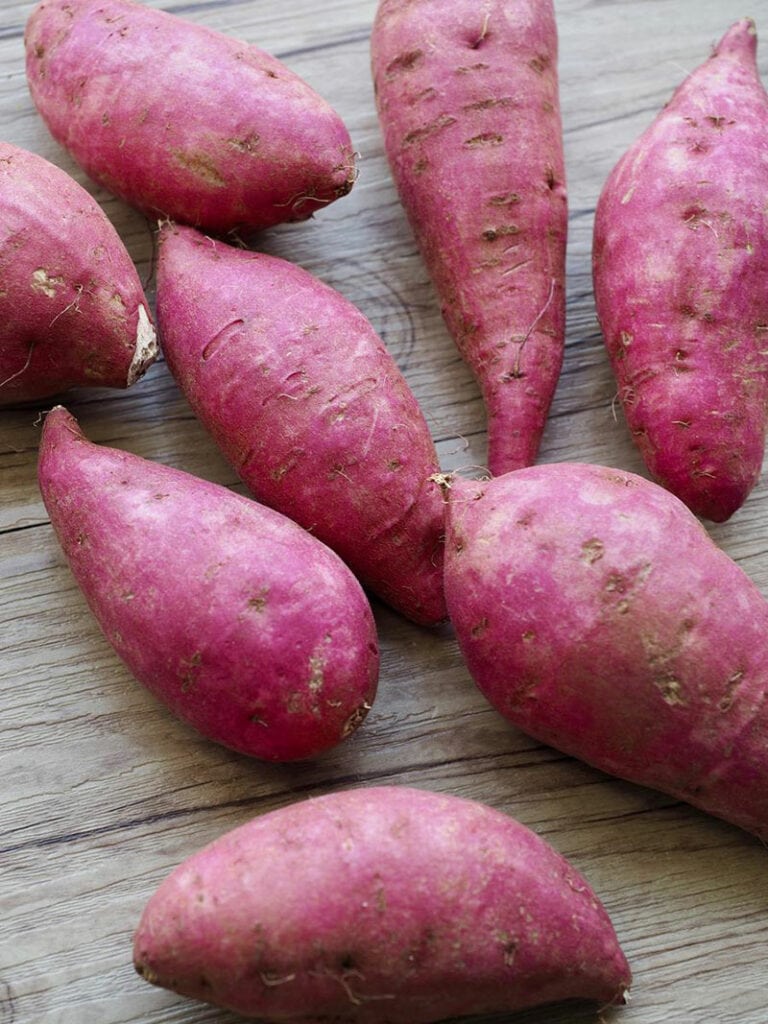
Sweet potatoes from the sandy land of Aljezur in Faro and Algarve stand out with their pear-like shape and purple to yellow-brown skin. The flavor is something else; it’s velvety, sweet, and subtly reminiscent of chestnuts.
Every bite reminds me of the ancient legend associated with the sweet potato. During the Reconquista, Christian soldiers supposedly fortified themselves with a sweet potato potion before key battles against the Moors, contributing to their victory.
Every November, the annual Aljezur Sweet Potato Festival takes place to celebrate this wonderful vegetable. It is locally hailed as the “best sweet potato in the world.”
Influence of European Vegetables on World Cuisine
Introduction of European Vegetables to the Americas
The introduction of European vegetables to the Americas has significantly shaped the cuisine of North and South America.
This was particularly evident during the Columbian Exchange, a period of biological and cultural exchanges between the Old World and the New World following Christopher Columbus’s voyage in 1492.
Crops like carrots, garlic, lettuce, and certain types of cabbages, onions, and peas were introduced to the list of America’s vegetables during this period.
These vegetables are now staples in many traditional dishes across the continent. For instance, onions and garlic feature heavily in Mexican cuisine, used as a base for many traditional sauces and dishes.
Furthermore, European immigrants brought knowledge of their traditional farming and cooking methods, influencing American cuisine.
For instance, Irish immigrants introduced potato cultivation methods. It leads to the prominence of this root veggie in traditional American dishes, like mashed potatoes and potato salad.
Influence on Asian Cuisine
European vegetables and cooking techniques also profoundly influenced various Asian cuisines. For example, tomatoes and potatoes were brought to Asia by European traders. Now, they have become staple vegetables and fruits in Asia.
In India, for instance, the British colonial period led to the introduction of several European vegetables. Potatoes are a key ingredient in many Indian dishes today, such as aloo gobi (a vegetarian dish made with potatoes and cauliflower) and samosas.
Similarly, the Philippines, a Spanish colony for over three centuries, incorporates several vegetables of European origin in their cuisine, including tomatoes and bell peppers.
Influence on African Cuisine
The influence of European vegetables on African cuisine is significant in countries under European influence. For instance, Portuguese traders introduced sweet peppers, tomatoes, and various types of squash to West Africa.
In South Africa, the Dutch, French, and British also popularized European-introduced vegetables through recipes, like bredie, a type of meat stew with cabbage, beans, and tomatoes.
FAQs
Unearthing The Hidden Gems Of European Vegetables
And there you have it, a journey through the world of European vegetables! From the breathtaking landscape of the Balkans to the sun-kissed lands of the Mediterranean, the continent boasts an abundance of fresh and diverse products to make your dishes more wonderful.
So go ahead and try them out. I’m sure you and your family will be surprised with the result. Your likes and comments matter a lot to me, so please be generous with them!
Don’t hesitate to share this post with your friends so that they can celebrate the grandeur of European vegetables with you.
References
- Radicchio: Nutrition, Benefits, and Uses (2020). healthline.com.
- Brabantse Wal asperges (2016). gov.uk.
- 6 Potential Health Benefits of Cayenne Pepper (2023). healthline.com.
- How much fruit and vegetables do you eat daily?(2022). ec.europa.eu.

